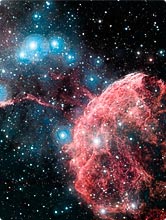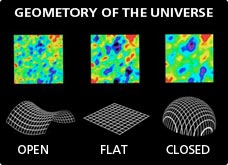There is some entity that permeates the entire universe. People have believed this for a long time. It was Aristotle, an Ancient Greek philosopher, who first proposed the concept of “ether,” a celestial substance. Along with the development of science, debate has swung back and forth. However, recent astrophysics has gradually revealed that the universe is filled with “energy.” How does this energy that pervades the universe manifest itself and what effect does it exert on the universe?
The entity that permeates the universe
“Cogito, ergo sum” (“I think, therefore I am” in Latin)
The originator of this phrase, the most celebrated dictum in the history of philosophy, was the 17th-century philosopher René Descartes.
Everything should be subject to questioning. If we take this way of thinking (known as the “method of doubt”) to its logical conclusion, we must ultimately question even our own existence. In that case, is there anything in which we can place our confidence as an immutable point of reference?
In response to this question, Descartes put forward the basic precept that “I do not doubt my own existence which I doubt,” or in other words, “I think, therefore I am.” Thanks to this outstanding contribution to philosophy, Descartes is renowned as the founder of modern philosophy.
In addition to being a philosopher, Descartes was also an eminent scientist. However, his approach to science differed from his approach to philosophy. Like other scientists of the day, he made use of the concept of “ether,” which was believed to permeate the universe, to explain the movement of the planets within its swirl. Why did Descartes use the concept of ether, whose existence was then unproven, in his explanation?
Science sometimes makes progress by advancing an audacious hypothesis and then testing it. At the time of Descartes, the concept of ether, which had been proposed as early as the pre-Christian era, had still not been disproved, and it was not until the 20th century that the notion of ether was completely repudiated.
Nowadays, scientists are hooked on the notion of an entity that permeates the entire universe. This entity is known as “dark energy.”
Dark energy is currently being investigated, but its existence has been assuredly confirmed.

Descartes, the founder of
modern philosophy
© Superstock/PPS
From the “biggest blunder of my life” to the cutting edge
It was Albert Einstein who completely disproved the existence of ether. He demonstrated that light is propagated in empty space, not in ether. However, physicists were thinking of a different entity, distinct from ether, permeating the universe.
The universe should be of a constant size. So, Einstein advanced this hypothesis on the basis of intuition. He then surmised that there would have to be an outward force opposing gravity to enable the universe to retain its shape and prevent it from collapsing under its own gravity. This led Einstein to add an energy term, known as the cosmological constant, at the end of his gravitational field equation.
However, when Einstein subsequently learned from the observations of Edwin Hubble*1 that the universe is expanding, he is said to have acknowledged that the addition of the cosmological constant based on the belief that the universe was of constant size had been the biggest blunder of his life. Ironically, although it was disproved at the time, Einstein?s hypothesis is now attracting attention. In fact, this energy, the cosmological constant, corresponds to the “vacuum energy” that the universe required for large expansion at its very birth. On top of this, there is also the possibility that it represents the unknown energy (or dark energy) that is whipping present-day physicists into a frenzy of excitement.
- *1
The observations of Edwin Hubble
- Please refer to The oldest light in the universe
The universe is permeated by an unknown energy. It was astronomers who produced incontrovertible proof of this.
Astronomers investigating the origins of the universe focused on supernovae that burned extremely brightly after a big explosion. Within a binary star system, a white dwarf is debris produced when the heavier of the two stars has burned out. Having absorbed the surrounding gases, a white dwarf will explode when the mass becomes 1.4 times as heavy as that of the sun. This is termed as a Type Ia supernova. The brightness of the supernova is roughly equivalent to that of an entire galaxy.
One of two stars (binary star) circling one another becomes a giant star and explodes, and a white dwarf comes into existence. When a white dwarf swallows up surrounding gas, a Type Ia supernova explosion takes place.
It transpires that, at their brightest period, Type Ia supernovae exhibit an essentially uniform level of brightness. In other words, in our universe we could come by any number of stars that shine with the same brightness. This fact holds enormous significance for research. Up until recently, the furthest part of the universe we could see was 50 million light years away, but today we can observe parts of the universe that are up to 9 billion light years away by observing the brightness of a Type Ia supernova. These observations yield hitherto undreamt-of revelations, such as the existence of dark energy and that the expansion of the universe is accelerating.
Evidence of dark energy comes to light
Ever since the Big Bang, the universe has been expanding rapidly. When scientists first realized this, they believed that gravity would slow this expansion down, and in any case expansion would not accelerate. However, in 1998, astronomers' observations of supernovae revealed that the speed at which the universe is expanding is currently increasing rapidly. To those in the know, this fact came as quite a shock.
If the universe is expanding at a fixed speed, there would be a constant relation between the proportion by which the light from a supernova is stretched (the red shift) and its brightness. However, if the universe's rate of expansion is getting faster, a supernova ought to appear darker, in accordance with the degree to which the light from the supernova is stretched, as opposed to if the universe were expanding at a constant speed. In fact, supernovae that are more than 5 billion light years away do appear to be darker.

The CFHT (Canada France Hawaii Telescope) in Hawaii has been used to observe many supernovae.
© Jean-Charles Cuillandre
In other words, 5 billion years ago the universe (which is now 13.7 billion years old) switched from a constant rate of expansion to a rapidly increasing rate of expansion.
What was it that caused the expansion of the universe to accelerate? In order to explain this, we must consider the energy that permeates the universe.

The debris from a supernova explosion observed by the CFHT. New stars are created out of the gases from the supernova explosion. The red parts are the gaseous debris from the supernova. The blue lights are the newly created stars.
© Canada-France-Hawaii Telescope / J.-C. Cuillandre / Coelum
The eve of the revolution
It is this “dark energy,” as yet unexplained, that is accelerating the expansion of the universe. Its existence is indicated not only by the observation of supernovae but also by the observation of the temperature distribution of the universe carried out using the WMAP satellite.

Observation of the temperature distribution of the universe using the WMAP satellite revealed that our universe is flat, not warped.
©WMAP
The WMAP satellite is also being used to conduct more detailed research into the warping of space. This suggests that the universe is “flat,” not warped, and that distant objects do not appear distorted. It further indicates that the numerical value Ω that expresses the density of the universe is more or less equal to 1. Of which, ordinary matter accounts for approximately 4% and dark matter accounts for approximately 23%. Thus, the unexplained dark energy would seem to account for approximately 73%*2, meaning that the universe is for the most part comprised of dark energy.
- *2The most recent articles on the subject put the percentage of ordinary matter at 3.9%, that of dark matter at 24.6%, and that of dark energy at 75.3%.

Jelly beans as an analogy for the content of the universe. The colored beans represent ordinary matter.
© Fermilab Image
Observation of supernovae also bears out these assumptions. Thus, observation of supernovae and observation carried out by the WMAP satellite have now independently revealed the existence of dark energy.
What exactly is dark energy, though? For scientists, research into dark energy is virgin territory. For this very reason, they are focusing their attention on it so as not to miss the chance to solve the puzzle.
“The eve of the revolution” is how Laureate Professor Yoji Totsuka of University of Tokyo sums up the current situation. There are so many things that we do not know, and little by little they will connect up with one another. It is likely that there will soon be a great revolution and we will come to understand nature. This will not be confined to space physics (which deals with the very largest objects), but will also encompass elementary particle physics (which deals with the very smallest), unifying the two and inevitably creating a new picture of the universe. This effort will require steady accumulation and analysis of data.
Associate Professor Mamoru Doi of University of Tokyo is a long experienced observer of supernovae. While he has confidence in observational results, he takes a wider view, saying:
“At face value, these observations seem to point to the existence of a highly mysterious energy. However, it is more likely that the results will serve as clues to new physical laws.”
Does dark energy really exist under the current framework, or is this the first step to a higher level of understanding of the universe? This is what we are about to find out.
Editorial contributor / Date of article posted
Associate professor Mamoru Doi, Institute of Astronomy, University of Tokyo / April 2007

